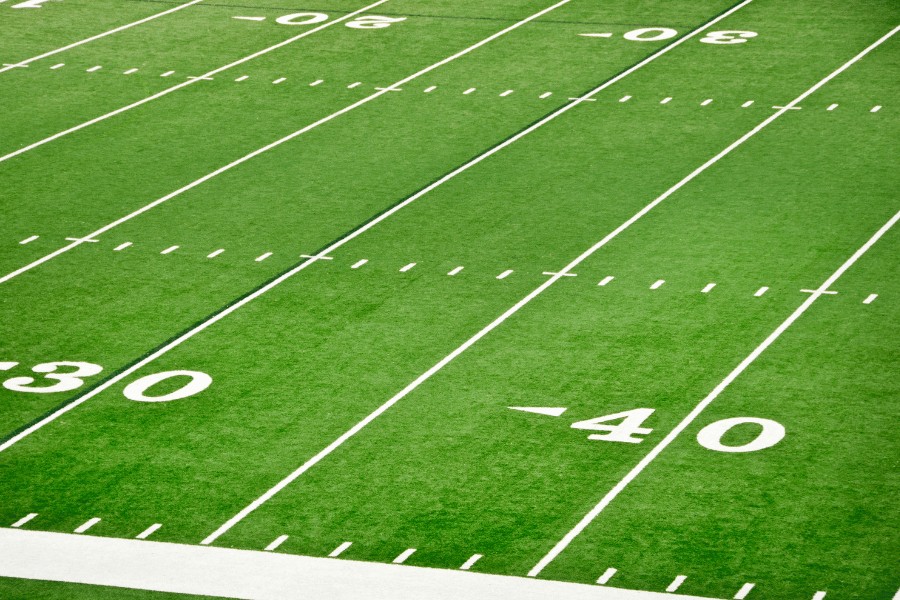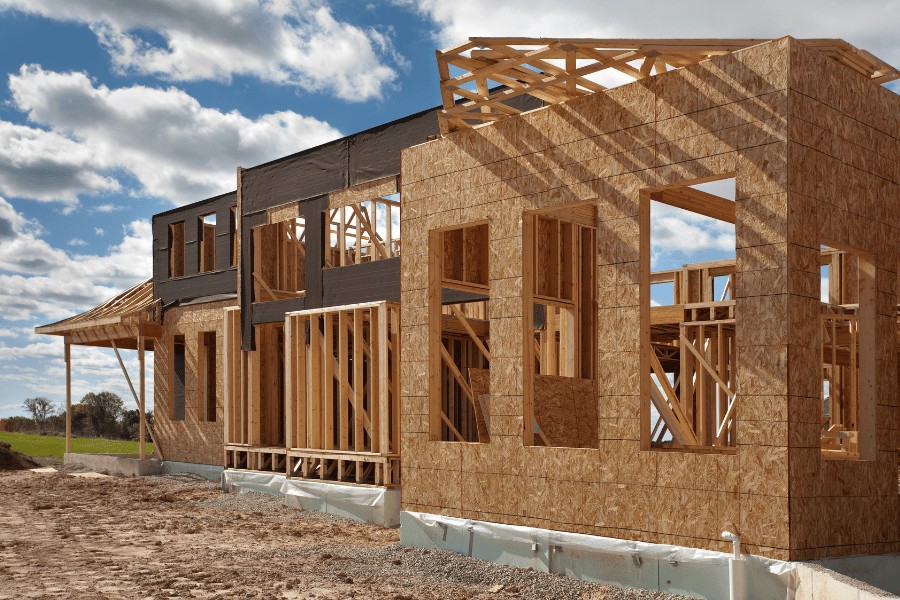Are you curious about just How Big Is One Acre? At HOW.EDU.VN, we understand that visualizing land measurements can be tricky. An acre is equal to 43,560 square feet, a key concept in real estate and land management. This comprehensive guide provides detailed explanations, real-life comparisons, and practical tips to help you accurately estimate land size and grasp the scope of an acre. Discover the value of expertise in understanding property dimensions, land area, and accurate estimation.
1. Understanding the Basics: What Exactly Is an Acre?
An acre is a unit of land measurement commonly used in the United States and several other countries. But what does that really mean in practical terms?
1.1. The Definition of an Acre
An acre is defined as 43,560 square feet. This measurement is used to describe the size of land parcels, from residential lots to large agricultural fields. Understanding this definition is the first step in visualizing just how much space an acre encompasses.
1.2. Historical Context: The Origin of the Acre
The concept of the acre dates back to medieval times. Historically, it was defined as the amount of land a yoke of oxen could plow in a single day. While this definition is no longer practical for modern measurements, it provides insight into the historical significance of the acre as a fundamental unit of agricultural land. According to Encyclopedia Britannica, the term “acre” is believed to be derived from the Latin word “ager,” meaning field, highlighting its deep roots in agricultural practices.
1.3. Metric Conversion: Acres in Square Meters and Hectares
For those more familiar with the metric system, an acre can be converted to approximately 4,047 square meters or 0.405 hectares. This conversion is useful for international comparisons and for those working with land measurements in different units.
| Measurement | Value |
|---|---|
| 1 Acre in Square Feet | 43,560 square feet |
| 1 Acre in Square Yards | 4,840 square yards |
| 1 Acre in Square Meters | 4,046.86 square meters |
| 1 Acre in Hectares | 0.405 hectares |



2. Visualizing an Acre: Real-World Comparisons
Numbers alone can be abstract. To truly grasp the size of an acre, it helps to compare it to familiar objects and spaces.
2.1. The Football Field Analogy
One of the most common comparisons is to a football field. An acre is approximately 90% of a standard American football field, excluding the end zones. This visual can help you imagine the overall area covered by an acre.
2.2. Tennis Courts and Basketball Courts
Another helpful comparison is to tennis and basketball courts. An acre can accommodate about 16 tennis courts or 9 basketball courts. These comparisons offer a sense of scale that is relatable to many people.
2.3. Other Everyday Comparisons
To further illustrate the size of an acre, consider these comparisons:
- Homes: An acre could fit approximately 18 average-sized homes (around 2,400 square feet each).
- Parking Spaces: You could fit about 70 standard parking spaces on an acre.
- Sedans: Imagine 242 sedans parked closely together—that’s roughly the size of an acre.
These everyday comparisons make the concept of an acre more tangible and easier to understand.
3. Practical Tips for Estimating Land Size
Estimating land size can be useful in various situations, from buying property to planning landscaping projects. Here are some practical methods to help you estimate the size of a land parcel.
3.1. Manual Measurement: Using Measuring Tape or Wheel
One of the most straightforward ways to estimate land size is by manually measuring the property lines. You can use a measuring tape or a measuring wheel to determine the length and width of the property. Once you have these measurements, you can calculate the area in square feet and convert it to acres.
3.1.1. Step-by-Step Guide to Manual Measurement
- Walk the Perimeter: Walk the property lines, using a measuring tape or wheel to measure each side.
- Record Measurements: Record the length of each side of the property.
- Calculate Area: If the property is a rectangle or square, multiply the length by the width to get the area in square feet. For irregular shapes, divide the property into smaller, more regular shapes, calculate the area of each, and then add them together.
- Convert to Acres: Divide the total area in square feet by 43,560 to get the area in acres.
3.2. Utilizing Online Mapping Tools: Google Maps and GIS Systems
Online mapping tools like Google Maps can be valuable resources for estimating land size. These tools allow you to measure distances and areas directly on the map. Additionally, local Geographic Information System (GIS) websites often provide detailed property maps with dimensions and parcel information.
3.2.1. How to Use Google Maps for Land Measurement
- Open Google Maps: Go to the Google Maps website or app.
- Locate the Property: Find the property you want to measure.
- Right-Click and Measure: Right-click on the starting point of the property line and select “Measure distance.”
- Trace the Perimeter: Click to add points along the property line to trace its perimeter.
- View the Area: Google Maps will display the total distance and estimated area of the traced property.
3.3. Consulting Property Documents: Deeds and Plat Maps
Property deeds and plat maps are official documents that provide detailed information about a property, including its dimensions and boundaries. These documents are typically available from local government offices or through online property record databases.
3.3.1. Understanding Property Deeds and Plat Maps
- Property Deed: This legal document transfers ownership of the property and includes a description of the land, often with detailed measurements.
- Plat Map: A plat map is a scaled drawing that shows the layout of a property, including lot lines, dimensions, and easements. It is often recorded with the local government and provides an accurate representation of the property’s boundaries.
3.4. Professional Surveyors: When to Seek Expert Help
For the most accurate land measurement, especially in complex or disputed situations, it is best to hire a professional surveyor. Surveyors use specialized equipment and techniques to precisely determine property boundaries and land size.
3.4.1. Benefits of Hiring a Professional Surveyor
- Accuracy: Surveyors provide the most accurate measurements, which are essential for legal and construction purposes.
- Boundary Resolution: Surveyors can resolve boundary disputes and provide official documentation of property lines.
- Compliance: Surveys ensure that property boundaries comply with local regulations and zoning laws.
4. Factors Influencing the Value of an Acre
The value of an acre of land can vary significantly based on several factors. Understanding these factors can help you make informed decisions when buying or selling property.
4.1. Location, Location, Location: The Importance of Geography
The location of the land is one of the most significant factors influencing its value. Land in urban areas or desirable regions will typically be more expensive than land in rural or less accessible areas. Factors such as proximity to amenities, schools, and transportation also play a crucial role.
4.2. Zoning and Land Use Regulations
Zoning regulations dictate how land can be used, which can significantly impact its value. Land zoned for commercial or residential development is generally more valuable than land restricted to agricultural or conservation purposes.
4.3. Accessibility and Infrastructure
Accessibility to the property, including the availability of roads, utilities, and other infrastructure, affects its value. Land with existing infrastructure is more valuable because it reduces the cost and effort required for development.
4.4. Natural Resources and Topography
The presence of natural resources, such as water, minerals, or timber, can increase the value of an acre. Similarly, the topography of the land, including its slope, drainage, and soil quality, can affect its suitability for various uses and, therefore, its value.
5. Benefits of Owning Land: Privacy, Building Opportunities, and Recreation
Owning land offers numerous benefits, from increased privacy to opportunities for building and recreation.
5.1. Enhanced Privacy and Space
One of the primary advantages of owning acreage is the enhanced privacy it provides. With more land, you have greater distance from neighbors, reducing noise and visual intrusions. This privacy can be particularly appealing for those seeking a peaceful and secluded living environment.
5.2. Expanded Building Opportunities
Acreage provides expanded building opportunities, allowing you to construct additional structures such as guesthouses, workshops, or recreational facilities. This flexibility can be invaluable for accommodating growing families, hobbies, or business needs.
5.3. Outdoor Recreation and Lifestyle
Owning land opens up a wide range of outdoor recreational opportunities. You can create gardens, install swimming pools, build sports courts, or simply enjoy the natural landscape. Acreage offers the space to pursue hobbies like gardening, hiking, and wildlife observation.
6. Acreage and Commercial Real Estate
In the world of commercial real estate, the concept of an acre takes on a slightly different meaning. A commercial acre is the area of land remaining after improvements like curbs, sidewalks, and parking areas have been constructed. This measurement is crucial for determining the usable space in a commercial development project.
6.1. Understanding Commercial Acres
A commercial acre typically consists of about 36,000 square feet, which is less than a standard acre due to the space occupied by infrastructure. This distinction is important for developers and investors who need to accurately assess the available space for buildings and other commercial uses.
6.2. Types of Commercial Developments
Commercial developments can include a variety of projects, such as:
- Retail Stores: Shopping centers and individual stores.
- Office Buildings: Multi-story office complexes.
- Warehouses: Storage and distribution facilities.
- Factories: Manufacturing plants.
The size and layout of these developments are carefully planned to maximize the use of the commercial acre.
7. Expert Insights from HOW.EDU.VN’s Team of PhDs
At HOW.EDU.VN, we understand that navigating the complexities of land measurement and real estate can be challenging. That’s why we offer expert insights and personalized guidance from our team of experienced PhDs.
7.1. Personalized Consultations
Our team of PhDs provides personalized consultations to address your specific questions and concerns about land size, property values, and real estate investments. We offer tailored advice based on your unique needs and goals.
7.2. Access to Cutting-Edge Research
HOW.EDU.VN stays at the forefront of real estate research, providing you with access to the latest data and insights. Our experts analyze market trends and regulatory changes to help you make informed decisions.
7.3. Comprehensive Support
From understanding the basics of acreage to navigating complex commercial real estate transactions, HOW.EDU.VN offers comprehensive support to guide you through every step of the process.
8. Frequently Asked Questions (FAQs) About Acreage
Here are some of the most common questions we receive about acreage, along with detailed answers from our experts.
8.1. How Big Is an Acre in Square Feet?
An acre is equal to 43,560 square feet. This is the fundamental measurement to remember when dealing with land size.
8.2. How Many Square Feet Are in a Half Acre?
A half acre contains 21,780 square feet, which is half of the total square footage of a full acre.
8.3. What Does an Acre Look Like?
An acre is approximately the size of a football field without the end zones. This visual comparison helps in understanding its scale.
8.4. How Can I Measure an Acre of Land?
You can measure an acre of land by manually measuring the property lines with a measuring tape or wheel, using online mapping tools like Google Maps, or consulting property documents such as deeds and plat maps. For the most accurate measurement, consider hiring a professional surveyor.
8.5. How Much Does an Acre of Land Cost?
The cost of an acre of land varies widely depending on location, zoning, and other factors. According to the USDA, the average cost of an acre in the United States in 2022 was $3,800. However, prices can range from a few thousand dollars in rural areas to hundreds of thousands of dollars in urban centers.
8.6. How Many Homes Can Fit on One Acre?
The number of homes that can fit on one acre depends on zoning regulations and the size of the homes. In some areas, developers can build up to 15 houses on a single acre, while in others, the density may be lower.
8.7. What Is a Commercial Acre?
A commercial acre is the area of land remaining in a commercial real estate development project after improvements like curbs, sidewalks, and parking areas have been made. It typically consists of about 36,000 square feet.
8.8. What Are the Benefits of Owning Acreage?
The benefits of owning acreage include enhanced privacy, expanded building opportunities, and outdoor recreational possibilities.
8.9. How Do Zoning Regulations Affect the Value of an Acre?
Zoning regulations dictate how land can be used, which significantly impacts its value. Land zoned for commercial or residential development is generally more valuable than land restricted to agricultural or conservation purposes.
8.10. When Should I Hire a Professional Surveyor?
You should hire a professional surveyor for the most accurate land measurement, especially in complex or disputed situations, or when you need official documentation of property lines.
9. Real-Life Acreage Comparisons
To help you visualize the size of an acre, here are some additional real-life comparisons:
- 90% of a football field: Nearly the entire playing area.
- 16 tennis courts: A substantial area for recreational activities.
- 242 sedans: A parking lot full of cars.
- The Roman Colosseum: Covers six acres, demonstrating the scale of historical landmarks.
- 18 average-sized homes: A small residential neighborhood.
- 1,584 potatoes: An agricultural perspective on land use.
- The White House: Located on 18.7 acres of land, showing the size of significant government properties.
- 70-yard sticks: A linear measurement perspective.
- 696,960 Post-it notes: An abstract, visual representation of area.
- New York City: Encompasses 205,000 acres, illustrating the vastness of urban areas.
- Nine basketball courts: Another recreational area comparison.
- 40 semi trucks: A commercial transportation perspective.
- 391,419 dollar bills: An economic perspective on land value.
- A FIFA soccer field: Between 1.6 and 19.6 acres, showing the range of sports field sizes.
- 1,032 beds: A logistical perspective on space usage.
- 70 parking spots: A practical perspective on urban planning.
- The average baseball field: 4.5 acres, indicating the scale of recreational facilities.
- A volleyball court: 0.2 acres, a smaller-scale comparison.
- The Amazon Rainforest: Approximately 1,359,079,598 acres, demonstrating the immensity of natural landscapes.
- The Statue of Liberty: Sits on 12 acres of land, highlighting the size of iconic monuments.
- The Mall of America: 96.4 acres, showcasing the scale of large commercial centers.
10. Conclusion: Unlock the Value of Expert Guidance with HOW.EDU.VN
Understanding how big is one acre is essential for anyone involved in real estate, land management, or property development. With the right knowledge and resources, you can make informed decisions and maximize the value of your land. At HOW.EDU.VN, our team of PhDs is dedicated to providing you with the expert guidance and personalized support you need to succeed.
Don’t navigate the complexities of land measurement alone. Contact us today to schedule a consultation with one of our experienced PhDs and discover how we can help you unlock the full potential of your property. Our experts at HOW.EDU.VN are ready to assist you with any questions or concerns you may have. We are dedicated to providing you with the knowledge and support you need to make informed decisions about your land and real estate investments.
Ready to take the next step? Reach out to HOW.EDU.VN for personalized guidance from our team of expert PhDs. We’re here to help you navigate the complexities of real estate and land management with confidence.
Contact Information:
- Address: 456 Expertise Plaza, Consult City, CA 90210, United States
- WhatsApp: +1 (310) 555-1212
- Website: HOW.EDU.VN
Let HOW.EDU.VN be your trusted partner in understanding and maximizing the value of your land assets.
Call to Action:
Are you seeking clarity on land measurements or property values? Do you need expert advice for your real estate investments? Contact how.edu.vn today for a personalized consultation with our team of experienced PhDs. We’re here to help you make informed decisions and unlock the full potential of your land assets. Don’t wait—reach out now and let us guide you toward success. Our team is dedicated to providing you with the knowledge and support you need to achieve your goals. Contact us today to get started!
